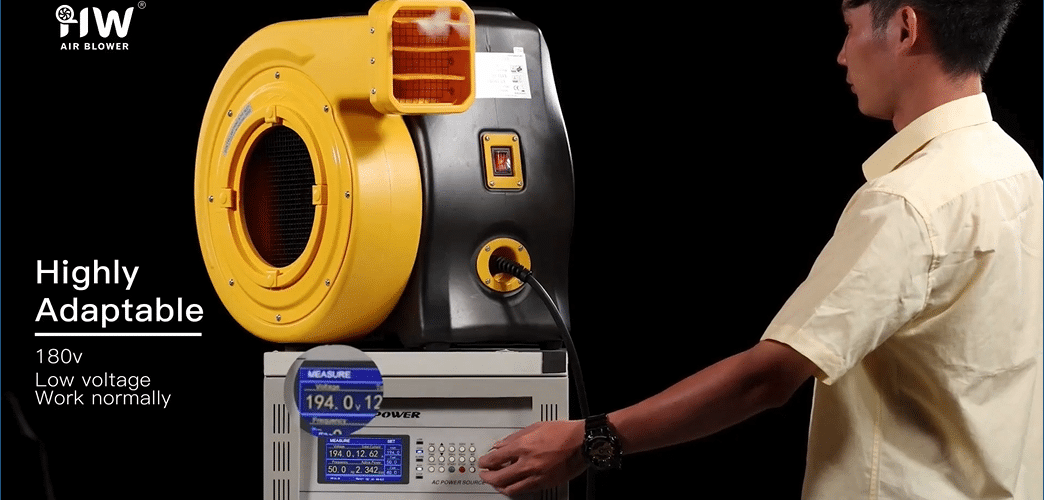
FAQs: Setting Up and Operating Inflatable Blowers for Events
Inflatable blowers are an essential part of event planning and rental businesses in Brisbane. From bounce houses to inflatable slides and obstacle courses, these powerful devices ensure that your inflatables stay fully inflated throughout your events. However, setting up and operating inflatable blowers can sometimes raise questions for both new and experienced event organizers. In this blog, we answer some of the most frequently asked questions (FAQs) about setting up and operating inflatable blowers for events.
1. How Do I Set Up an Inflatable Blower?
Setting up an inflatable blower is a straightforward process:
- First, place the blower on a flat, stable surface that is free of any obstructions. Ensure that the blower’s air intake vents are not blocked by grass, fabric, or other objects.
- Next, connect the blower’s output nozzle to the inflatable’s air intake using the built-in straps or ties to secure it. Ensure the connection is tight to prevent air leakage.
- Finally, plug the blower into a grounded electrical outlet that matches the voltage requirements of the blower. Turn on the blower, and your inflatable will begin to inflate. Monitor the process to ensure the structure fully inflates and stays firm.
2. Can I Use Extension Cords with Inflatable Blowers?
Yes, you can use extension cords with inflatable blowers, but it’s important to use the correct type. Choose a heavy-duty extension cord with a minimum gauge of 12 AWG (American Wire Gauge) to handle the electrical load without overheating. Make sure the extension cord is rated for outdoor use and long enough to reach the power source without straining the connection. Using an undersized cord can reduce airflow, cause the blower to overheat, or lead to power loss.
3. How Long Does It Take to Inflate a Bounce House or Other Inflatable?
The inflation time depends on the size of the inflatable and the power of the blower. For smaller bounce houses, a 2 HP blower like the Huawei REH-2E can fully inflate the structure within 2 to 3 minutes. Larger inflatables, such as obstacle courses or slides, may take longer, typically around 5 to 7 minutes. It’s important to monitor the inflation process to ensure the structure is fully inflated and stable before allowing guests to use it.
4. Can I Leave the Blower Running All Day?
Yes, inflatable blowers are designed to run continuously during events to keep the inflatables fully inflated. However, make sure to place the blower in a well-ventilated area where the intake vents won’t be blocked. Most commercial blowers, including the Huawei REH-2E 2 HP, are equipped with overheat protection to prevent damage from extended operation, so you can safely leave the blower running throughout the day.
5. What Should I Do If the Inflatable Deflates During the Event?
If an inflatable starts to deflate during an event, follow these steps:
- First, ensure the blower is still running and connected to the power source. Check the power cord and any extension cords for loose connections or damage.
- If the blower is operating correctly, inspect the connection between the blower and the inflatable to ensure there are no air leaks.
- Check for any rips or tears in the inflatable that might be causing air loss. If you find any damage, remove guests from the inflatable and repair it immediately.
- If the blower has overheated, turn it off and allow it to cool down before restarting.
6. How Do I Ensure the Blower Is Operating Safely?
To ensure safe operation of your blower, follow these safety tips:
- Use a grounded outlet that matches the blower’s voltage requirements.
- Keep the blower’s intake and exhaust vents clear of obstructions at all times.
- Place the blower on a dry, stable surface to prevent tipping or water damage.
- Avoid using the blower in wet conditions, unless the blower is specifically rated for water resistance.
- Inspect the power cord regularly for signs of wear or damage, and replace it if needed.
7. How Do I Store the Blower After the Event?
Proper storage is important for maintaining your blower’s performance and longevity. After each event, allow the blower to cool down completely before moving it. Wipe down the exterior to remove any dirt, dust, or debris, and coil the power cord neatly to avoid kinks or damage. Store the blower in a dry, clean area away from moisture and extreme temperatures. If possible, cover the blower with a protective cover or store it in a case to prevent dust accumulation during storage.
Conclusion
Inflatable blowers like the Huawei REH-2E 2 HP play a crucial role in ensuring your inflatables are set up quickly and operate safely throughout your events. By following the proper setup, operation, and maintenance tips outlined in this blog, you can ensure that your blowers work efficiently and provide a safe, fun experience for your guests. Understanding these FAQs will help you avoid common issues and keep your equipment in top shape for many events to come.